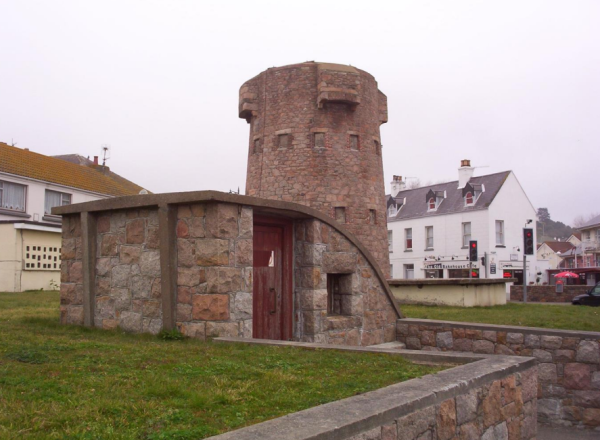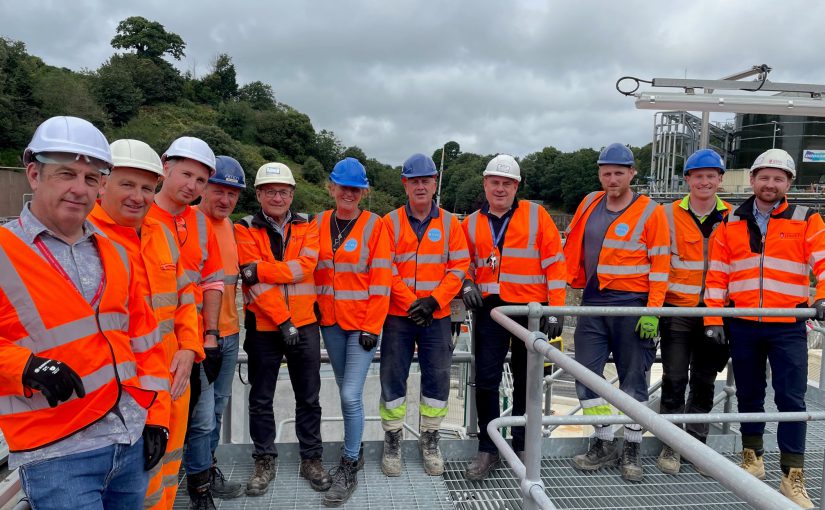Back in 2013, the Waste Water Strategy identified an urgent need to replace the existing Sewage Treatment Works (STW) at Bellozanne, many elements of which dated back to its original construction in the late 1950s.
The principal contractor (nmcn PLC) was appointed in 2018 and was initially due to complete the STW by December 2022. There were, however, significant delays partly caused by Covid-19 so a revised completion date for the project was set for the end of 2023.
Subsequently, the contract with nmcn PLC was terminated for insolvency and we (the Infrastructure and Environment department) took on the role of the principal contractor to avoid further delays and additional costs. I&E are currently on schedule to deliver the project by the end of this year, within the approved budget.
It was estimated that re-tendering the STW project, instead of I&E taking on the role, would have resulted in a delay of at least one year and an additional cost of circa £10m.
The new plant has been constructed in phases, some of which are already operational, with the final phase currently under construction. It is anticipated that “commissioning” of the whole plant will start at the end of October 2023, with final completion programmed for the end of the year.
Once completed, the new treatment plant will have a design capacity to treat sewage from a connected population equivalent of 118,000. However, an additional 20% capacity has been built into the plant to allow for future population growth.
The wider sewerage network
The approved Bridging Island Plan 2022-25 has set targets to build thousands of new homes in Jersey over the next few years. Therefore, the capacity of the sewerage system will need to accommodate the additional demand. The existing infrastructure is ageing and is already reaching its limit.
To complement the Bridging Island Plan, a new Bridging Liquid Waste Strategy (2023-26) has been published by the Minister for Infrastructure. It describes the need for additional funding to upgrade the existing sewerage network to support population growth and particularly the additional homes indicated in the bridging Island Plan.
The new Bellozanne STW is nearing completion and will have the additional capacity required. However the total flow that can reach it will be constrained by the capacity of the wider network, which is already at its limit in a number of areas. The network therefore needs to be reinforced and upgraded before the flow and load from new houses can be accommodated.
The 220-page Bridging Liquid Wase Strategy considers both the immediate needs for 2023 to 2026, and beyond this in the medium term up to 2035. In doing so it identifies a number of schemes to upgrade the infrastructure in key locations including First Tower, Le Dicq, Maufant, West Park, Bonne Nuit, St Brelade, Greve de Lecq, Maupertuis, St Peter, Beaumont, Grouville and Le Hocq.

Some additional funding of circa £2m has recently been allocated for 2023 with further funding due to be received from 2024 onwards to enable I&E to progress these projects.
Currently, it is anticipated that site investigation and design work will be progressed in 2023 with the first construction works commencing in 2024.
Current Capital Delivery Programme
The strategic proposals and policies presented in the Bridging Island Plan take steps to address the provision of and affordability of homes in Jersey. The key intended outcomes of these policies are summarised in the Bridging Island Plan, as follows:
- Addressing the identified backlog of 7,900 new homes by 2030.
- Up to 4,300 new homes including affordable homes by 2025.
- Use of publicly owned land and buildings for housing.
- Appropriate mix of new housing stock to suit demand.
The proposed housing is required to meet both an existing shortage and the forecast population growth. This means that the new homes will both increase demand on the network and redistribute the existing demand to new locations. The network, as a whole, is generally at its limit of capacity but is coping with the current population.
The schemes that will be required to address the issues of lack of capacity and aging assets have been broadly grouped into two types. ‘Key Infrastructure’ projects will upgrade existing assets such as rising mains, pumping stations and sewers while new assets that expand the network have been identified as ‘Emerging Projects’ to reflect the fact that they are known to be needed, but require further investigation to fully quantify them.
These are in addition to the ‘Business as Usual’ projects in the Rolling Infrastructure Vote, Foul Sewer Extension schemes and Liquid Waste Replacement Assets and Minor Capital Programme.
17 projects and three programmes of ongoing projects have been identified as either Key Infrastructure or Emerging Projects under the current Capital Delivery Programme. They include rising main replacements, strategic storage tanks, surface water separation schemes and the conversion of the Bonne Nuit STW to a pumping station to transfer sewage to Bellozanne STW for treatment by 2025.
Ultimately, timely delivery is critical because if the network is not ready then houses will have to remain vacant until the works are complete.
Fat, oil and grease
Since mid-May 2023, data collected at the Bellozanne STW has recorded very high ammonia levels as well as fat, oil and grease (FOG) for a prolonged period. With the drier weather and extremely low flows, the nature of the incoming flow has changed considerably. These environmental factors coupled with higher sewage temperature have resulted in some operational issues at the STW.
Recent surveys across the Island indicated high values of ammonia, potentially due to the nitrate levels in the water supply. The rate at which nitrate is converted into ammonia will depend on a number of factors, including the temperature of the wastewater, the pH of the waste water, and the presence of other nutrients.
To avoid any recurrence of the recent operational issues, a number of mitigation measures have been identified and are being progressed for implementation.
A public awareness campaign is currently under way with a view to informing Islanders about the impact of these factors on the performance and effluent quality of the STW.
There is an ongoing effort to identify potential sources of concern and ensure compliance with the discharge of waste water into the public sewerage network. All commercial kitchens have received information to explain what can and can’t go down the foul sewer system and, in particular, the issues caused by fats, oils and grease. All commercial kitchens should have facilities to remove fats from their waste.
The Liquid Waste Compliance team will continue to visit commercial establishments to check compliance. This also includes training of staff to separate out fats and avoid pouring it straight down the drains.
 blog.gov.je
blog.gov.je